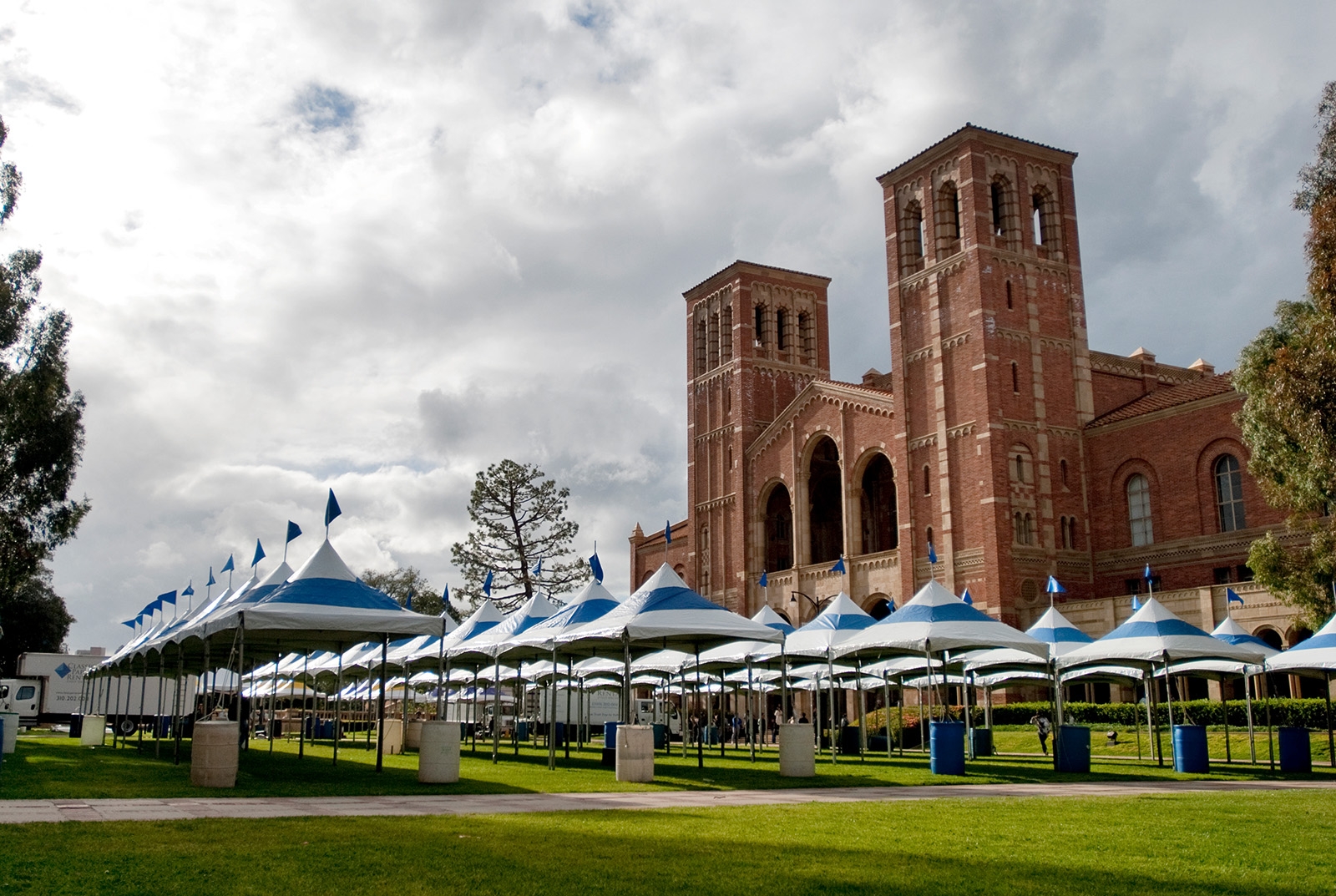Tabatha Lewis: Student missions do more to boost resumes than public health

UCLA student groups that go on public health and medical missions must focus on working with local citizens to create a sustainable system that helps their own communities. (Daily Bruin file photo)
By Tabatha Lewis-Simó
May 8, 2018 9:09 p.m.
This post was updated on May 18 at 5:20 p.m.
You probably follow one or two people on Instagram who have posted pictures of themselves dressed in scrubs and holding a child from a different country.
Maybe they posted a caption about what a rewarding experience it was to work with underprivileged children and how they thought it was cute that they were so easily entertained by an iPhone. And after that heartwarming experience, your friend got to go back home to their life in the U.S., and the children went back to their everyday lives with just a memory.
Student groups such as Global Brigades at UCLA, MEDLIFE and Global Action in Nursing take students on medical and public health missions to Latin American countries such as Nicaragua, Peru and Panama. Students aid local communities in these countries by setting up mobile clinics and teaching locals about health care. These missions tend to occur once or twice a year and give local communities access to health care they might not otherwise receive.
While these missions can benefit local communities by giving them access to some health care and are certainly rewarding for the students who go on the trips, they are not the best way to aid people abroad. Going to a community for a week or two likely does not allow students to make a significant impact to improve the underlying issues locals face with regards to their health and sanitation.
If students – who come from areas where health care and resources are more accessible than in other nations – want to create a lasting change on the communities they visit, they should focus on working with local citizens to create a sustainable system that helps their own communities.
Students’ overseas trips can cost between $1,000 to $2,000 depending on the organization facilitating the program. The majority of these fees tend to be used for airfare and lodging. In order to help pay for these trips, students often fundraise at restaurants in Westwood and ask for donations from family and friends.
Melissa Villa, a fourth-year geography and Spanish community and culture student, went on a medical mission to Peru two years ago with MEDLIFE at UCLA. She said she and other students checked people’s vitals, such as blood pressure, height and weight, and recorded patient history at the mobile clinics they help set up. The patients were then seen by doctors, whom the students were able to shadow.
But local citizens can be taught to check vital signs. It’s difficult to imagine why it is necessary to transport students all the way from the U.S. to do these jobs.
That said, programs such as MEDLIFE do try to teach local communities about how to mitigate diseases such as diabetes.
“(Some of the locals have) very treatable diseases, and we would just teach them how to control them – little things they had no idea they had,” Villa said.
But local citizens would themselves be able to teach their communities about how to manage treatable health conditions if they received a medical education. Studying medicine at Cayetano Heredia Peruvian University, a private university in Lima, Peru, costs about 3,950 sol or about $1,200 per year, which is about the cost of one student’s medical mission. It would be more practical to fundraise money to help local citizens study medicine in their home country, where they are familiar with their fellow community members’ needs, than bringing in foreigners to play doctor for a week. After all, undergraduate students have neither the technical skills nor the license to practice medicine.
Global Brigades at UCLA claims on its website that participants aim to “empower volunteers to facilitate sustainable solutions in under resourced communities.”
However it seems that a lot of these trips are unintentionally more oriented toward the student experience.
A.J. Macalino, a third-year biology student who is a member of Global Brigades, said she felt the program was an enriching way for her to gain medical and volunteer experience.
“Since I am a premedical student, it really contextualizes what global health means, gives hands-on insight into global inequities and how we as students can make a difference even if it’s very small,” Macalino said.
Macalino said that as a part of Global Brigades’ public health initiative, students built a latrine – an outdoor bathroom – and a sustainable water resource, as many rural communities do not have clean running water. This certainly seems to align with Global Brigades at UCLA’s goal of creating sustainable solutions. However, according to a UNICEF case study , it can cost up to $400 to build a toilet in Nicaragua, one of the countries Global Brigades at UCLA visits. So it seems that it would be feasible to build about five toilets in a community as opposed to flying out a single student for $2,000.
Sure, international medical and public health trips are rewarding for the students who take part in them. These trips allow students to get hands-on experience in a field they are potentially interested in. These trips also provide meaningful aid to the communities. But these organizations’ trips are not the best way to go about aiding these communities. If their goal is to create sustainable public health efforts, it would be more efficient to donate funds to local communities instead of spending that money on transporting and housing students who do not know what it’s like to live in these areas every day of the year.
So instead of funding some students’ resume-boosting experiences, student organizations on a mission to improve health care in other countries should help those communities build themselves up.


